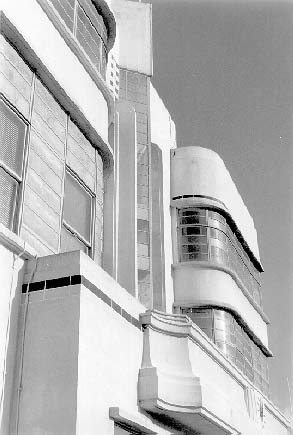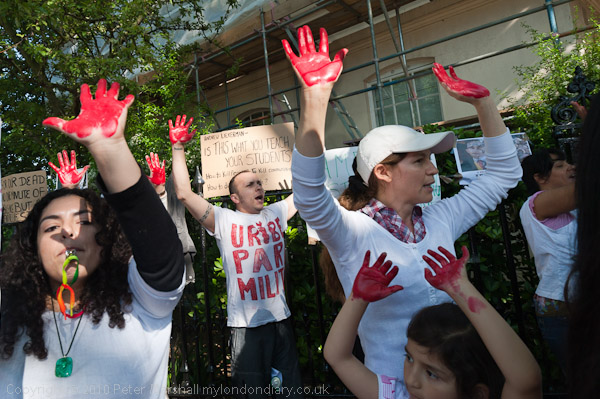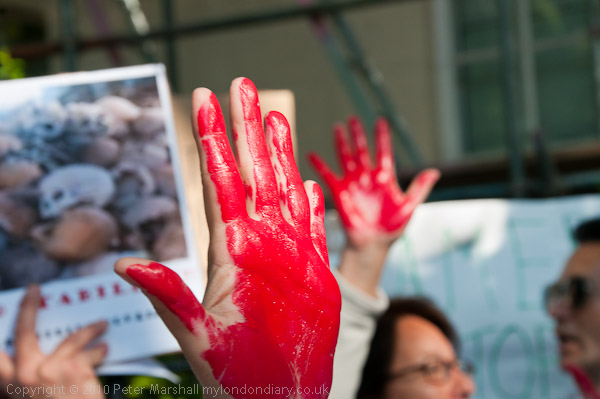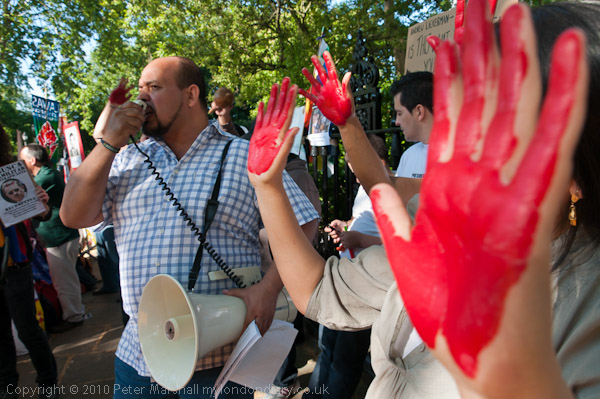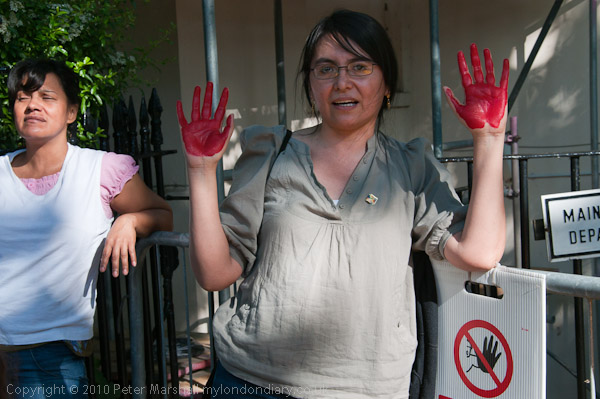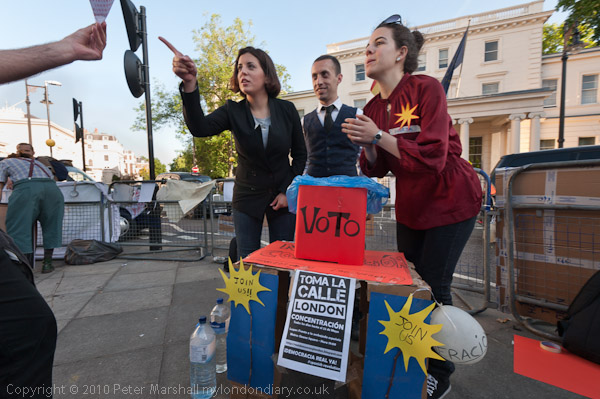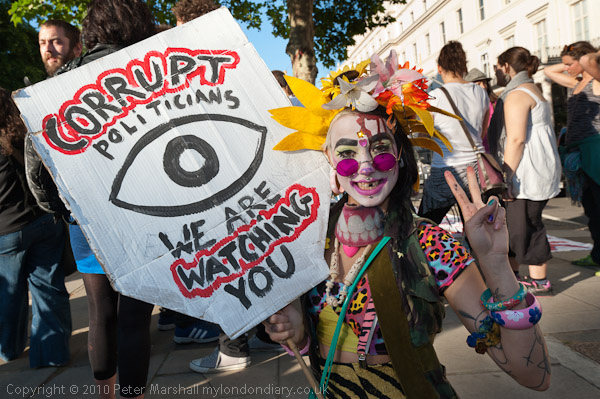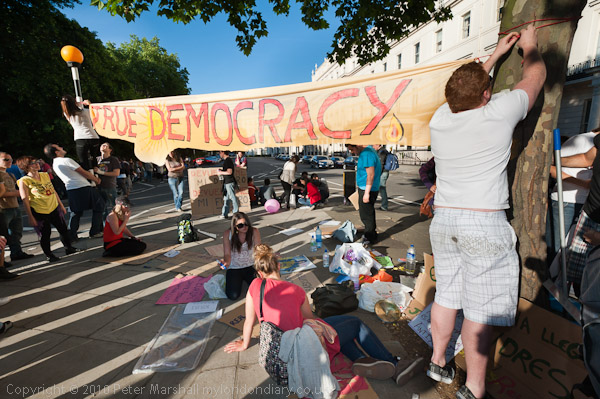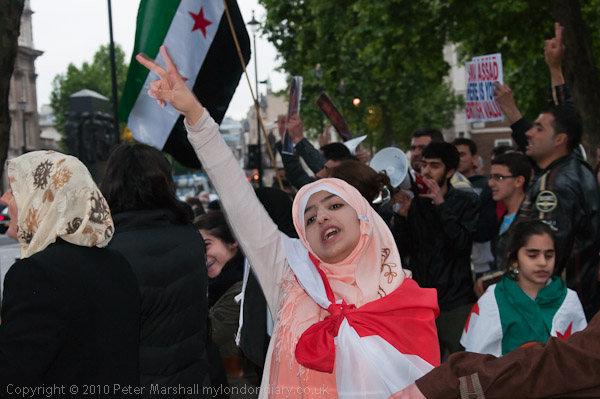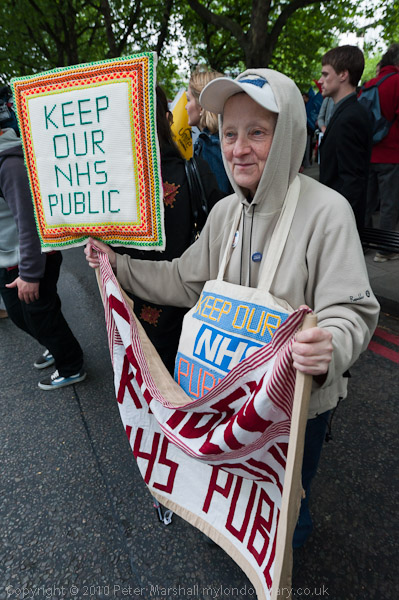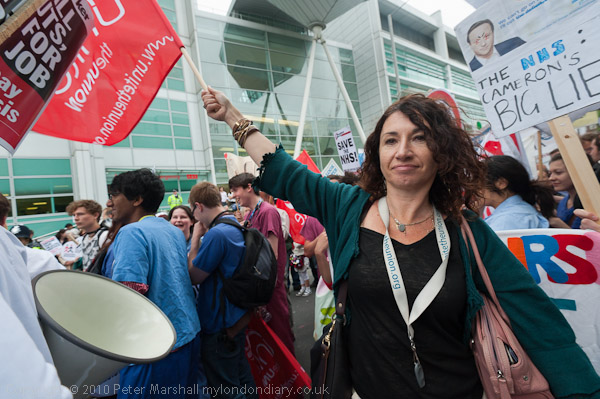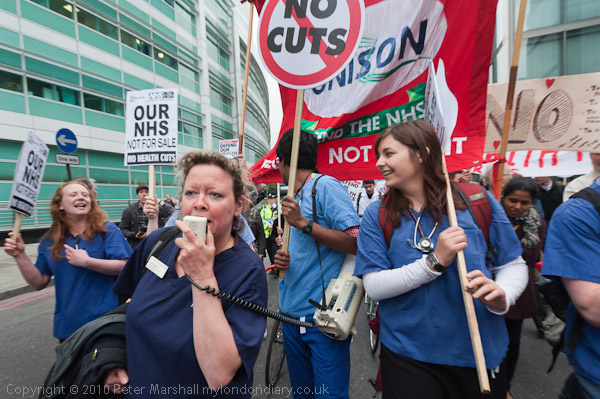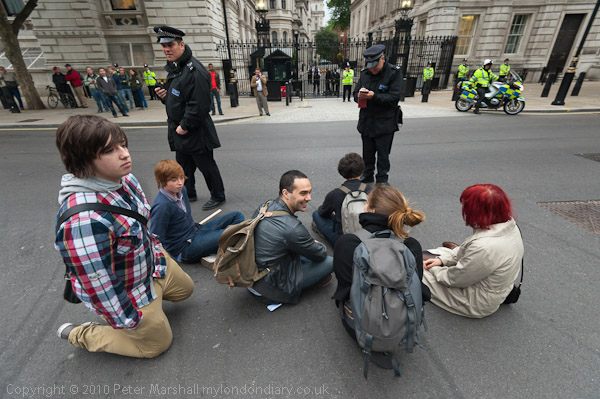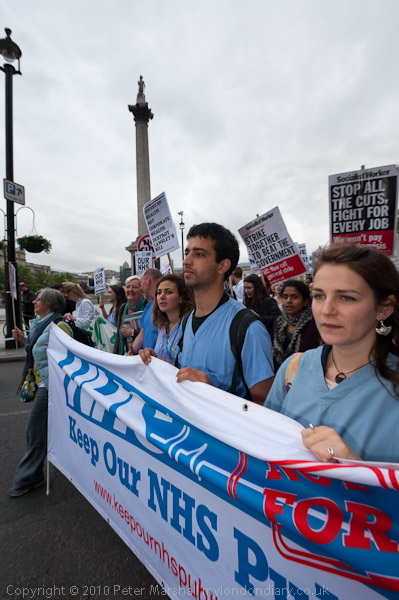When Obama came to London, there were plenty of people who wanted to protest against him and US policies, and unlike some previous occasions, the Met decided to keep within the law and allow protests to take place, while making sure it was fairly unlikely that the president actually got to see or hear them.
Security was high around Buck Palace, which was surrounded on all sides by police, with a ring of officers standing generally every 10 or 20 yards around the whole of its high perimeter wall – which is topped by a fairly impressive fence. You do get a few glimpses of lawns and trees over the top of the wall from the top deck of buses going past, and there is a rather better view from the top floors of the London Hilton, although there are too many trees for a decent view of the extensive lawns beneath.
Police stopped me walking across the front of the palace, where they were out in force, insisting a take a longer route around – a quarter of a mile to get around a hundred yards, but other than that they were reasonably helpful, allowing those with press passes out between the barriers holding the protesters back and the police lines between these and the roadway to photograph the demonstrations.
The protesters were perhaps 50 metres away from the large motorcade – around 20 vehicles, many with dark glass windows – that drove up the mall and into the palace. I imagine Obama was in one of them, but the windows were tightly shut and I didn’t see him as they drove quickly by and into the palace.
There were quite a few different groups of protesters, along with a few individual protests, including both supporters of the Syrian government and the Syrian protesters, but I saw no trouble, with all the groups shouting in the direction of the palace and apparently ignoring each other.
Photographically the call to Obama to shut down the Guantanamo Bay camp and release Londoner Shaker Aamer presented me with most problems, firstly because the standard Adobe Nikon profile does take issue with bright fluorescent orange suits and for the pictures I was sending in to a picture library I needed to use the Camera Neutral v3 dcpTool Untwist profile I’ve mentioned in a previous post.
More tricky was the long message spelt out on the posters, which were laid out on the ground in front of the row of protesters for the press to photograph, with buck palace in the background. If you move back to take the whole message in even with the 16mm then they are hard to read as you only see them obliquely. The solution is to get in closer with the 10.5mm, though you have to work quickly as this gets you in everyone else’s shot – and I had to shout back to the guys I’d only be a second. Well, perhaps ten seconds.
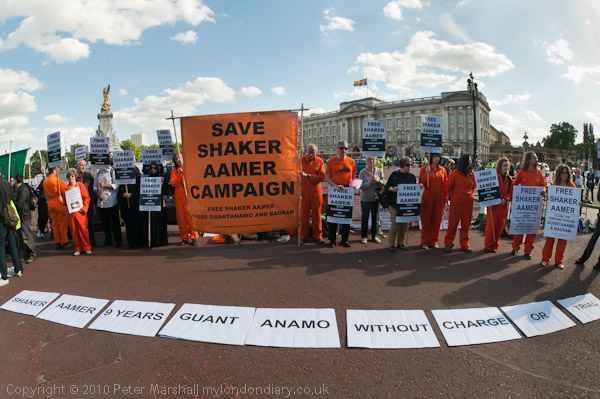
It still isn’t a great image, but they had obviously put in some effort to make the sheets carrying the message and I felt I should take a little trouble to photograph it as best I could.
Later I had an interesting time trying to photograph the Syrian opposition, who were getting pretty excited, with one man getting up on the shoulders of another and a great deal of jumping around and shouting. It was tricky getting to the right place and the crowd was surging back and forth, and it gave me little or no time to think. In the end there were a couple of images I was reasonably happy with, including this one:
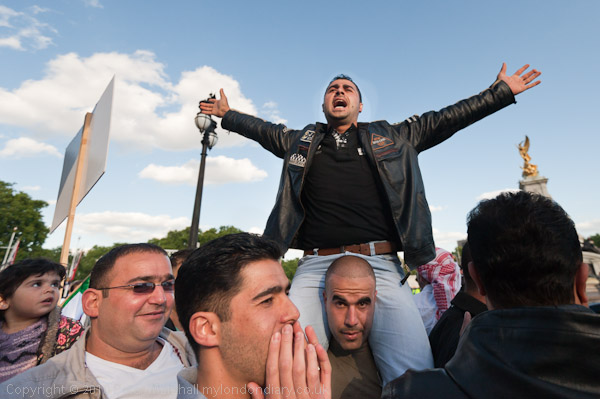
This was taken with the 16-35 lens wide open, when f4 gives you all the depth of field you are likely to need, though the light at this point was pretty good, and I didn’t really need the 1/8000s shutter speed that ISO500 gave me, though it did avoid camera shake. I was getting pushed around quite a bit as people jumped up in the crowd, so a fast shutter speed was certainly called for, but this was perhaps a little overkill.
I wasn’t in sympathy with all of the protests, and in particular the pro-government Syrians looked rather more like an officially sponsored PR outing than a protest, but their huge images of their president did make for some interesting pictures.

I liked the hands here, but it doesn’t quite fit the format, and this is one of the few of my images that I think looks better for a much squarer crop:

Photographically I think I had a better day than usual and there were a few pictures I was pleased with – you can see them on Obama Told Release Shaker Aamer Now! and Other Protests Against Obama.




